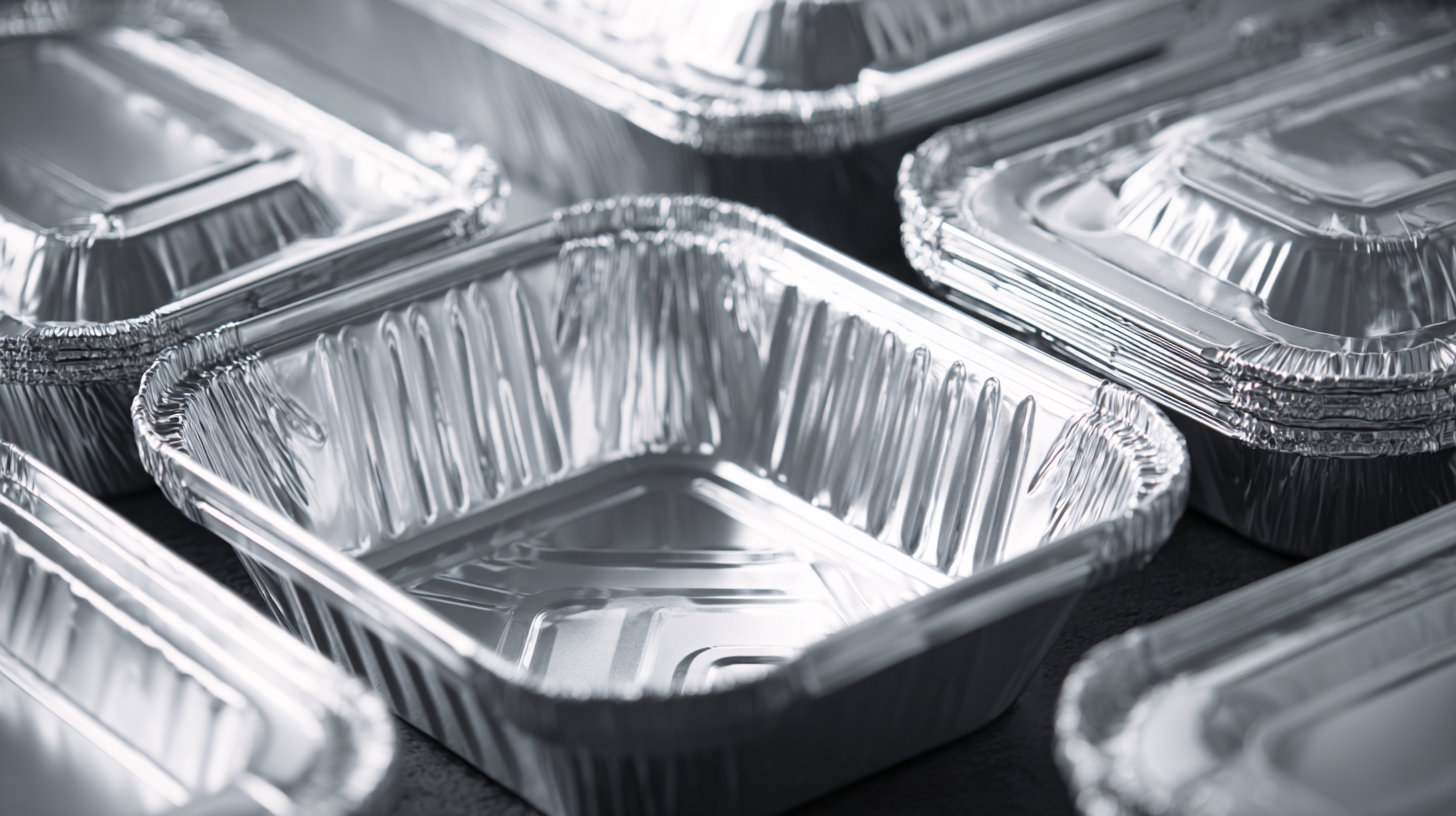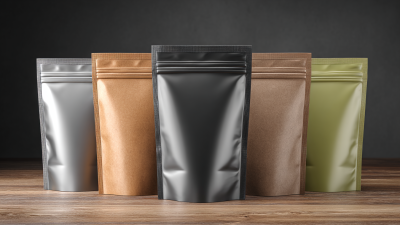How Aluminium Packaging for Food Enhances Freshness and Reduces Waste: An In-Depth Look
Aluminium packaging for food has emerged as a key player in the battle against food waste, which is a pressing global issue, with an estimated one-third of all food produced being lost or wasted each year, according to the Food and Agriculture Organization (FAO). This waste not only contributes to environmental degradation but also represents a substantial economic loss, amounting to approximately $1 trillion annually. The remarkable properties of aluminium, such as its ability to create an airtight barrier that protects food from light, moisture, and oxygen, significantly enhance the shelf life and freshness of packaged products. Recent studies indicate that food packaged in aluminium materials can remain consumable for much longer than those in traditional packaging, thereby reducing the likelihood of spoilage. Additionally, aluminium is fully recyclable, with about 75% of all aluminium ever produced still in use today, which underscores its sustainability benefits. As consumers increasingly prioritize sustainable choices, aluminium packaging for food stands out as a pragmatic solution to improve food preservation while minimizing environmental impact.

The Science Behind Aluminium Packaging: How It Preserves Food Freshness
Aluminium packaging plays a crucial role in preserving the freshness of food, utilizing its unique properties to create an effective barrier against external factors. The science behind this preservation lies in aluminium's ability to offer a high degree of protection from light, moisture, and air, which are known to accelerate food spoilage. By creating a hermetic seal, aluminium prevents the infiltration of oxygen, minimizing oxidation and thereby significantly extending the shelf life of the contents.

Moreover, the reflective surface of aluminium helps in maintaining temperature stability, which is essential for perishable products. By reflecting heat, it helps in keeping the food colder for longer periods, which is particularly beneficial during transportation and storage. This temperature control not only preserves the quality and flavor of the food but also contributes to waste reduction, as consumers can enjoy fresher products that last longer. Overall, the utilisation of aluminium packaging exemplifies an innovative approach to safeguarding food, merging scientific principles with practical applications to enhance sustainability in the food industry.
Quantifying Waste Reduction: Aluminium Packaging vs. Traditional Materials
Aluminium packaging has emerged as a leading solution in the fight against food waste, particularly when compared to traditional materials. Research indicates that aluminium can extend the shelf life of food products significantly, with studies showing that it can keep food fresh up to 45% longer than its plastic counterparts. This longer preservation period not only enhances freshness but also drastically reduces the volume of food that ends up in landfills. In a world where food waste accounts for nearly one-third of all food produced globally, transitioning to aluminium packaging presents a compelling opportunity for sustainability.
Furthermore, the environmental impacts of packaging materials are being scrutinized through a life cycle assessment framework. According to recent analyses, while recycling is a critical strategy for managing packaging waste, it is not always the most sustainable option. The aluminium industry is actively investing in recycling technologies, reporting that recycled aluminium requires up to 95% less energy compared to primary production. This efficiency, combined with the material’s ability to maintain the quality and safety of food products, positions aluminium packaging as a frontrunner in waste reduction initiatives, thereby contributing to a circular economy focused on sustainability.
The Role of Barrier Properties in Extending Food Shelf Life
The barrier properties of aluminium packaging play a crucial role in extending the shelf life of food products. Aluminium effectively acts as a shield against environmental factors such as moisture, light, and oxygen, which are known to accelerate spoilage. By minimizing the penetration of these elements, aluminium packaging helps preserve the integrity of flavor, texture, and nutritional content. This barrier functionality is especially vital for perishable items like fruits, meats, and dairy products, where even slight exposure to air can lead to oxidation and spoilage.
Moreover, the recyclability of aluminium packaging complements its protective features, making it a sustainable choice for food preservation. By maintaining the quality of food for longer periods, aluminium packaging not only enhances freshness but also reduces food waste, contributing to greater efficiency in the food supply chain. This is crucial in a global context where food waste remains a pressing issue. Thus, the impressive barrier properties of aluminium packaging not only benefit consumers by providing fresher options but also support environmental sustainability by minimizing waste.
How Aluminium Packaging for Food Enhances Freshness and Reduces Waste: An In-Depth Look
| Packaging Type | Barrier Properties (Oxygen, Moisture) | Shelf Life Extension (Months) | Waste Reduction (%) |
|---|---|---|---|
| Aluminium Foil | Excellent oxygen barrier, good moisture barrier | 12 | 50 |
| Aluminium Cans | Good oxygen barrier, excellent moisture barrier | 24 | 40 |
| Aluminium Pouches | Good oxygen and moisture barrier | 18 | 35 |
| Aluminium Trays | Fair oxygen barrier, good moisture barrier | 9 | 30 |
Consumer Preferences: The Impact of Aluminium Packaging on Buying Decisions
Aluminium packaging has emerged as a preferred choice for consumers due to its unique ability to preserve food freshness and prolong shelf life. When shopping, many consumers prioritize products packaged in aluminium due to their superior barrier properties, which effectively protect against moisture, air, and light. This protection not only enhances the flavor and quality of food items but also significantly reduces the likelihood of spoilage, making aluminium-packaged products a more appealing choice for health-conscious buyers.
Moreover, the sustainability aspect of aluminium packaging influences consumer buying decisions. With growing awareness of environmental issues, many shoppers actively seek eco-friendly options. Aluminium is infinitely recyclable, thereby reducing waste and promoting a circular economy. This attribute resonates with consumers who prioritize sustainable practices in their purchasing habits. Consequently, brands that utilize aluminium packaging often attract loyalty from environmentally conscious consumers, leading to increased sales and a stronger market position.

Sustainability Insights: Recycling Rates and Environmental Benefits of Aluminium Packaging
The aluminium packaging market is increasingly embracing sustainability, with projections indicating a significant rise in its economic footprint. The North American aluminium market is expected to grow from $35.84 billion in 2025 to $49.90 billion by 2032, reflecting a compound annual growth rate (CAGR) of 4.8%. This growth is prompted by the growing demand for sustainable packaging solutions, particularly among consumers concerned about environmental impacts.
In the United States, consumer preferences are evolving rapidly, particularly in light of rising living costs and uncertainties. Surveys indicate that a substantial majority of consumers in 2025 will prioritize sustainability in their purchasing decisions, pushing brands towards more eco-friendly packaging options. Similarly, European consumers are also reassessing their values, showing a distinct preference for both sustainability and affordability. This convergence of consumer expectations across North America and Europe highlights the critical role that sustainable aluminium packaging plays in not just enhancing food freshness but also in reducing environmental waste.
Sustainability Insights: Recycling Rates and Environmental Benefits of Aluminium Packaging
This chart illustrates the recycling rates of aluminium packaging across different countries and highlights its environmental benefits in reducing food waste and enhancing freshness.



